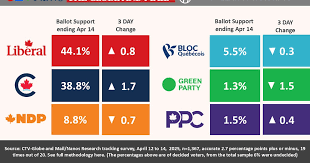Analyzing the 2025 Canada Federal Election Polls

Introduction
The 2025 Canada federal election is significant, as it presents an opportunity for citizens to shape their government and policies. As political parties gear up for the next electoral challenge, understanding polling trends becomes crucial for voters. Tracking polls can provide insights into public sentiment, party popularity, and potential outcomes, which can ultimately influence election strategies and voter turnout.
Current Landscape of the 2025 Election Polls
As of October 2023, various polling organizations have started to reveal data regarding the upcoming 2025 Canada federal election. Recent polls indicate a competitive race among the major parties: the Liberal Party, the Conservative Party, and the New Democratic Party (NDP). Polling data shows the Conservatives leading in popularity, garnering approximately 35% of the vote share, while the Liberals follow closely with 32%. The NDP stands at about 20%, reflecting a slight decline since the last federal election.
According to a recent survey conducted by Ipsos, 60% of Canadians believe the country is headed in the wrong direction, which may contribute to the current conservative leanings in the polls. Issues such as rising inflation, healthcare concerns, and climate action are at the forefront of voters’ minds, shaping their preferences.
Voter Sentiment and Key Issues
The key issues that are likely to influence the election include the economy, housing affordability, and public safety. Voters express a strong desire for actionable plans from candidates focusing on relief in high living costs and investment in public services. The NDP, championing social policies, has attempted to appeal to younger voters by emphasizing climate action and accessibility. Conversely, the Conservative Party is capitalizing on the economic concerns presented by voters, promising fiscal responsibility and tax reforms.
Additionally, changing demographics across Canada influence polling outcomes. Regions such as British Columbia and Quebec show distinct voting patterns that differ from those observed in the prairie provinces or Atlantic Canada. With the increase of diverse populations, the responsiveness of political campaigns to varied communities will also play a role in shaping voter decisions, as seen in previous elections.
Conclusion
The 2025 Canada federal election polls are dynamic and reflective of the current political climate. As the election date approaches, shifts in public opinion may occur, influenced by ongoing political discourse and major events. Voters should stay informed on polling data, as it offers valuable insights into candidate viability and potential government directions. Engaging in these discussions can help ready Canadians to make informed decisions when they head to the polls in 2025. Understanding these factors can empower every voter to affect positive change in the political landscape.









